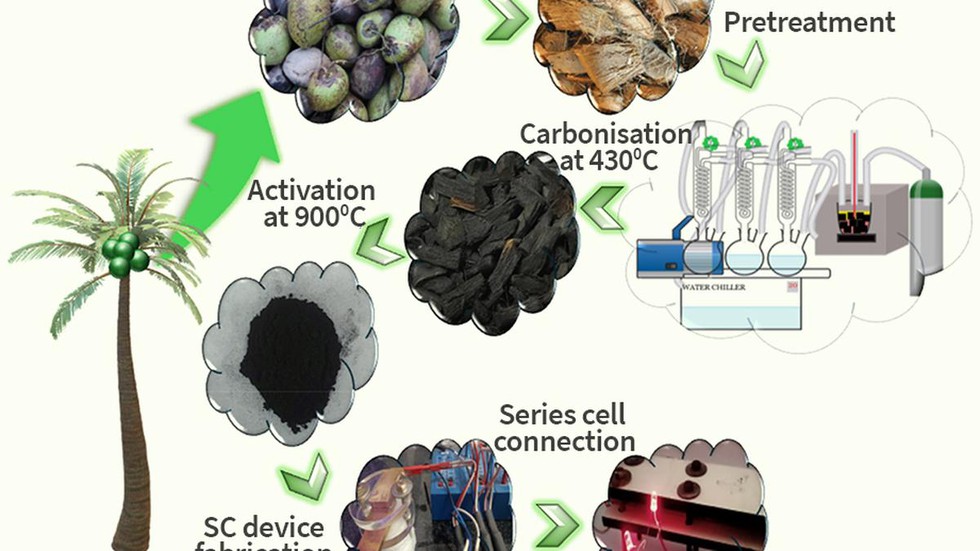About Supercapacitors:
- A supercapacitor is a next-generation energy storage device which is also known as an ultracapacitor.
- It has advantages such as high-power density, long durability, and ultrafast charging characteristics as compared to conventional capacitors and Lithium-Ion batteries (LIB).
- The main components of supercapacitors include an electrode, electrolyte, separator and current collector.
- An electrode is a solid electric conductor that carries electric current into non-metallic solids, liquids, gases, plasmas or vacuums.
- An electrolyte is a substance that produces an electrically conducting solution when dissolved in a polar solvent, such as water.
Key findings
- It is found that the prototype supercapacitors made of coconut husk-derived activated carbon to be four-times more efficient that the existing supercapacitors.
- This innovative method not only saves time, but also yields activated carbon with an impressive surface area of 1,200 m2 g-1 and highly porous structures, making it an ideal material for various applications.
- The device’s high-power output is capable of powering two LEDs for 20 minutes.
What is microwave-assisted method?
- It is relatively inexpensive and exhibits exceptional supercapacitor capability.
- By utilising an advanced microwave pyrolysis reactor one can produce high-quality carbon within five minutes, eliminating impurities like ash and generating zero waste.
